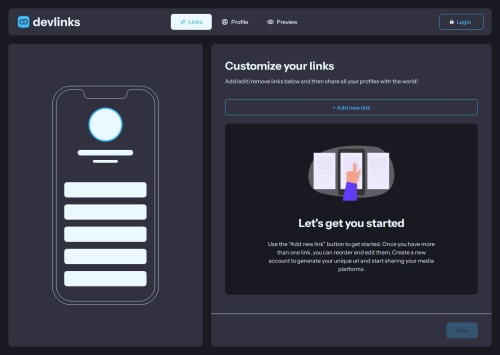Link-Share: One Link to Rule Them All

Solution retrospective
This represented my final intellectual exercise before learning a framework. After a few weeks of planning I decided to diverge from the original design in the following ways: >
- Requiring a user to create an account to use the application represents a significant emotional and time investment which may lead to a subsequent loss in traffic. To address this, I disrupted the application flow by allowing a user to interact with the app in every way without the need for creating an account. An account is only required when a user wishes to generate and share their own unique link.
- Due in part to the divergence from the original projects logical flow as well as my personal dislike of the original UI/UX, I chose to redesign certain UI elements and include some custom assets. These changes culminate mainly in the form of a custom color scheme including brand color, navbar changes both to desktop and mobile devices as well as custom notifications.
- This project implements data persistence using the browser's local storage as well as Supabase's database-as-a-service.
In part as an intellectual exercise and despite the performance implications, I decided to diverge from a single page application and instead implement a multipage web application. This required me to manage state across multiple pages which I achieved thanks to a Local Storage class. This separation of state from the database required further implementation of a version control system to sync data from the cloud and the client's local storage. This project also provided me my first opportunity to create and interact with a SQL database of which I have learned a great deal.
What specific areas of your project would you like help with?My next steps include grinding leetcode as if it were ranked League of Legends as well as developing further projects in Angular. I anticipate great things in the near future and I can not wait to share them with you.
Please log in to post a comment
Log in with GitHubCommunity feedback
No feedback yet. Be the first to give feedback on Geo A's solution.
Join our Discord community
Join thousands of Frontend Mentor community members taking the challenges, sharing resources, helping each other, and chatting about all things front-end!
Join our Discord